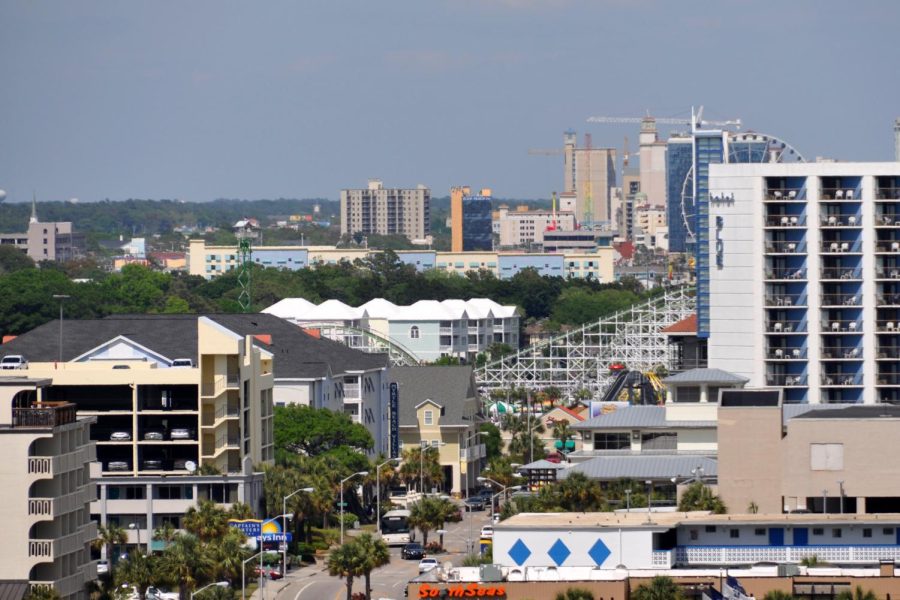OPINION: Myrtle Beach Development Practices Cause Damage
Horry County has been experiencing rapid growth. Myrtle Beach is considered the fastest growing place in the United States, according to a US News and World Report ranking in May of last year. The population increased 3.19 percent between 2022 and 2023 in Myrtle Beach alone and the average home value increased 14.8 percent from last year.While many are excited about the booming economy, hasty expansion causes serious risks. Public records show that about a quarter of Horry County falls into the 100-year floodplain, meaning that there is a 1 percent chance of a flood happening every year, and a lot of the growth is happening in the floodplain area. Unfortunately, the dangers of building on easily flooded land outweigh the economic benefits.
Filling and building on floodplains has become a common practice, as building on a floodplain is usually cheaper, and the land can be filled with dirt, meeting elevation requirements, notes U.S. News. These communities are far more susceptible to flooding, and the run-off affects not only the surrounding ecosystems, but also older communities built lower. The United States Geological Service mentions Special Flood Hazard Areas have a 26 percent chance of being flooded at least once in a 30-year span, which could potentially be devastating. In late 2022, the Board of Construction Appeals made exceptions to a company building 50 homes between Highway 905 and the Waccamaw River. The company was looking to save money by ignoring one of the Horry County Flood Damage Prevention Ordinance requirements. Companies looking to save money by avoiding or lowering construction requirements are harmful for any residents in floodplain areas.
Not only that, but rebuilding structures seaward of setback lines that were destroyed by natural causes, such as storms, is allowed. Despite having good setback standards – 40 times the average annual erosion rate and no less than 20 feet from the top of the main sand dune at ocean coastlines – the rebuilding of structures causes immense damage to important developmental buffers. “The state would benefit from codified policies to ensure the protection of [coastal dunes as] buffers,” according to the 2022 State of the Beach Report from the Surfrider Foundation.
Also, the Federal Government does not discourage development on floodplains, Governing.com noted. The National Flood Insurance Program does not account for sea-level rise and has limited impacts, leaving the majority of decisions to state and local governments. Former President Trump rolled back set standards for floodplain development as well, further promoting the dangerous development. The harmful impact that developing in these areas has on the residents and environment are not worth the economic benefits. While the land is cheaper, it’s cheaper because the property and residents may be victims of devastating damage.
To combat this, further restrictions should be put in place, limiting development of coastal areas that are susceptible to significant damages. Rebuilding of coastal structures that were damaged by natural causes should be either prohibited or rebuilt to a higher standard, taking proper precautions to ensure similar damages will not happen in the future. Also, limits on floodplain development need to be put back in place on a federal level, rather than leaving it up to state and local governments. Finally, higher standards need to be put in place for future development, such as how much can be built on a floodplain, increasing the building height minimum above base flood elevation, and prohibiting the use of filling up floodplains with dirt to reach the minimum height.
Bring up these concerns to local and state governments to promote needed change that will prevent harm to coastal communities.

Sarah is a senior who joined Journalism because she’s passionate about writing and wanted to experiment with a different style. She enjoys reading books,...
























